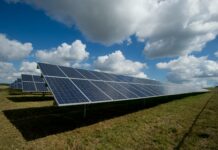
California used to be right up there with Texas when it came to fossil fuel production. But for nearly forty years, California’s production has steadily declined. From 1982 – 2017, their dry natural gas production fell 46%. But their need for it has not followed suit. Now, their production output equals only one-tenth of the state’s demand.
This isn’t their fault
They are leaning more and more heavily on renewable energy sources: wind and solar. With the closing of many of their natural gas and nuclear plants, their electricity needs not coming from renewables come from neighboring states. This out-of-state supply is what Californian energy officials blame for the electricity shortages. In a letter to Governor Newsome, they point out that heatwaves don’t stop at the state border. Their neighbors are also feeling the heat, and therefore need more electricity for themselves, and so have less excess electricity to sell.
The letter does have a definite finger-pointing feel. Instead, those officials might want to follow those states’ footsteps and learn to make so much power they have extra. And they do claim California needs to produce more energy – but they feel it needs to produce more renewable energy and to invest in more batteries.
California: Between a rock and a hard place
The government there seems to have backed the state into an area between a rock and a hard place. In order to produce more renewable energy, they need hundreds of square miles, if not more, on which to build turbines and solar panels. And they need to invest heavily in creating more infrastructure. Batteries aren’t cheap, either. That’s quite an investment for a state not known for investing wisely.
It would be less expensive to return to natural gas and nuclear power. But the heatwaves they are experiencing could be difficult for even these reliables. Nuclear power plants need cool water running through the plant, and high temperatures beget warm water. Nuclear plants would have to reduce production without enough cool water. In the same vein, high heat has been known to lower natural-gas power plants’ efficiency. What’s a state to do?
An idea might be to allow exploration of the Monterey shale formation. Located in central and southern California, it could be bigger than even the Eagle Ford in Texas, or it could hold almost nothing at all. Estimates, even within the same company, range from one end of the spectrum to the other. But, we may never know who is right about the Monterey reserves. Gaining oil and natural gas permits in California is no easy feat. Even when power plants have to reduce production, a shortage is less likely if there are enough of them.
Cars need power, too
Solar and wind power are used primarily for producing electricity. The state still needs to keep moving, and it is still running on fossil fuel. As of 2017, California had 337,483 electric vehicles (EVs). In 2018, there were 14,762,517 fossil-fuel run vehicles in the state. That’s a lot of gas and diesel.
Roughly 60% of California’s crude oil comes from foreign sources. (Only twenty years ago that that number was 15%.) The countries providing this oil do not have or adhere to the Environmental Protection Agency’s standards for American companies. And this oil arrives at the state on large ships that burn significant quantities of fuel and are more likely to have an accident or spill than a pipeline. But, since pipelines are frowned upon, shipping is the only option.
What can the state do now? They can’t afford to move forward with their renewable plan, and they refuse to move back to the reliability of nuclear and natural gas. Until the Californian government can come to a decision, its citizens will continue to sit in the dark.














